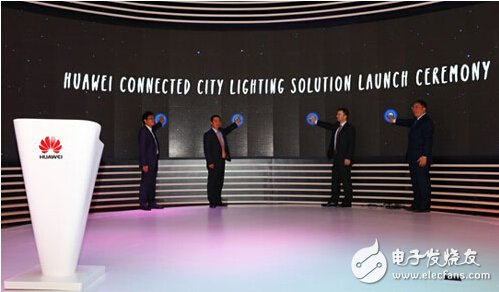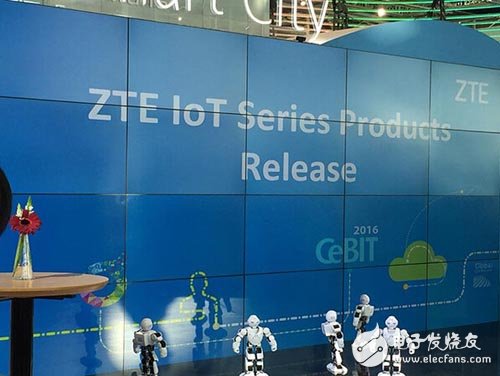The hotspots of the recent "smart cities" are nothing more than the two giants of Huawei and ZTE have cut into the field of intelligent street lamps. In mid-March, Huawei unveiled the first multi-level intelligent control lighting Internet of Things solution at CeBIT 2016, the world's largest ICT technology exhibition. It took the urban street lighting industry as an entry point and entered the field of intelligent lighting. At the same time, ZTE also announced the “BluePillar†smart street lighting solution as an important place for its smart city strategy.
Compared with traditional street lamps, smart street lamps have three advantages: first, more energy-saving, more functions, easier management and maintenance, and higher level of informationization; second, centralized or single-lamp control, timed tasks, timed alarms, equipment Information maintenance; Thirdly, intelligent street lamps can realize weather diversion in different time periods to achieve energy-saving purposes, which also reflects the intelligent lighting mode of street lamps - the advantage of on-demand lighting.

An executive of a lighting multinational company once said: "Intelligent street lights can become billboards, gun sound sensors, locators and street light parking systems, and become a medium for collecting, collecting and forwarding various information to big data platforms. Urban cloud big data interconnection platform based on 'smart street lights' realizes “intelligence†of urban management, transportation and car networking. Industry giants such as Philips and GE Lighting have launched their own intelligent street lighting systems, such as GE LightGridTM, which is currently in San Diego, USA. São Paulo in South America has a large-scale installation.
According to statistics, at present, 95% of cities in the sub-provincial level and 76% of cities above the prefecture level in China, a total of about 500 cities have proposed to build smart cities. As the smart city is still in its infancy, the system construction is too complicated, so the urban intelligent street lamp project is undoubtedly the best place to go. As an important carrier of smart city construction, smart street lights will also play a larger "comprehensive" role, using urban street lights as the port of the Internet of Things, and making the construction of smart cities more realistic and better able to land. Indeed, the city has a large number of street lights. On the main road of the city, there is a street lamp every 30-50 meters, evenly distributed. As the most dense urban infrastructure, street lamps are no longer a simple lighting tool.

For intelligent street lamps, Philips has also proposed the concept of "intelligent interconnected lighting": street lights are no longer just light poles and lamp heads, they may become sculptures of cities; street lights no longer only solve lighting problems, they may become carriers of smart cities and smart traffic. To transmit information and data, reduce the various types of monitors erected by urban and rural areas along the urban roads, and enhance the overall image of the city.
As the best carrier of intelligent lighting - the importance of LED lighting in the construction of smart cities is obvious. "LED smart street lamps have become a major trend in urbanization construction. With the cost reduction and technology improvement in the future, LED smart street lamps will promote the rapid development of urban intelligent lighting in the construction of smart cities and become the focus of smart cities." Zhang Huajian, deputy general manager of electronics, believes. Under the strong support of relevant government policies and the transformation of the LED industry, LED smart street lights will be further developed. It can be foreseen that LED street lights become the carrier of smart cities and intelligent transportation on the basis of intelligence.
Enterprises competing for layout to seize the opportunity
It is understood that the multi-level intelligent control lighting Internet of Things solution released by Huawei at CeBIT 2016 can integrate urban lighting street lights into the IoT network and visually manage it based on GIS. Managers can clearly understand each block and each. State information of street lamps; by applying flexible lighting strategies, it is possible to accurately control the switching status and illumination brightness of each street lamp, realizing on-demand illumination, and energy saving efficiency of up to 80%.
It can not only promote the construction of smart cities, but also achieve "secondary energy saving". LED smart street lights have naturally attracted the attention of many lighting companies around the world. Recently, GE's innovative energy company Current has new developments in smart street lights. It is understood that the intelligent LED street light installed in Yujiapu, Tianjin Central Business District is the first pilot project in Asia after the establishment of the company. Smart street lights save energy by 50%-60%, and come with multiple functions such as security camera, digital guide sign, and free Wifi router.
In addition, Cisco and Cree have announced that they will cooperate on smart lighting, and the two companies will jointly promote the Internet of Things market by combining their respective lighting technologies and Ethernet technologies.
Norbert Hiller, executive vice president of Cree Lighting, said that the new connected lighting technology developed by Cisco leverages Cree's Smartcast technology and Internet communication capabilities to provide 70% more energy-efficient lighting than traditional LED lighting. Cisco is a standard-based Power over Ethernet network platform that can operate and control Cree Smartcast series fixtures, light sockets and dimmers. Standard Power over Ethernet provides power and networking for the luminaires of this platform without the need for separate data and high voltage power connections.
It is reported that Cree's Smartcast technology based on Power over Ethernet is expected to be commercialized in the second quarter of 2016. As the largest LED application product and system enterprise in China, Shanghai Sansi is also committed to the research and development of LED smart system solutions. Recently, Shanghai Sansi has cooperated with domestic large-scale communication enterprises to integrate LED street lights, smart light poles, intelligent control systems and 4G/5G communication base stations, and integrates hardware and systems such as smart charging piles to provide a set of smart city development. New ideas.
Wang Yinghua, deputy general manager of Shanghai Sansi, said that the LED street light application system was independently developed by Sansi. It has been put into use in Jiangxi Wuning Industrial Zone and Jiangsu Hongze. The future development of LED smart street lamps is very good.
The outlook is expected, the LED market is huge
The explosive growth of smart city construction demand has become the highlight of China's current economic response to downward pressure and the promotion of the "Internet +" strategy. At the same time, China plans to build smart cities and strengthen sustainable development capabilities through the construction of intelligent infrastructure during the 13th Five-Year Plan period to strengthen the development of information and communication technologies. With the opening of the "13th Five-Year Plan", the spring of LED intelligent street lights is coming.
At the moment, building a smart city has become an irreversible trend in today's urban development. Nowadays, all kinds of good news continue to come, and the smart city trillion market has ushered in a window of eruption. Under the background of the Chinese government's vigorous deployment of smart cities, there are currently more than 400 cities across the country planning to build smart cities, of which 300 are listed as pilot smart city plans involving 2,600 key projects. This will bring trillions of yuan to the market for enterprises in China's related industries. However, according to relevant research data, as of 2015, the penetration rate of China's LED street lamp market is less than 30%. It can be seen that the market space of LED street lamps in the future is still very huge.
Both hard and soft, the road to exploration is still long
On the other hand, for LED companies, it takes a long way to participate in the construction of smart cities. John Couch, vice president of connected lighting company Gooee, previously said that by 2019, smart lighting systems using IoT technology will bring about $550 billion in revenue to software and services, while the revenue from hardware sales is only 50 billion. Dollar. For LED lighting companies, only the hardware sales revenue can be shared at present. Therefore, how to ensure the share of this cup while also gaining benefits in software and services is one of the key points that LED companies need to explore in the future.
At present, there are not a few companies that propose and start to study urban smart lighting solutions. Huawei is the first to deploy urban lighting intelligent control lighting Internet of Things solutions, which is undoubtedly one of the most powerful practitioners of smart lighting. In the future, with the expansion of market demand, the maturity of technology and the landing of smart cities, it is believed that more and more high-quality LED smart products will emerge, and the coverage of domestic LED smart street lights will be greatly improved.
Fiber Optic Distribution Box,Fiber Optic Breakout Box,Fibre Optic Breakout Box,Fibre Break Out Box
Cixi Dani Plastic Products Co.,Ltd , https://www.cxdani.com
